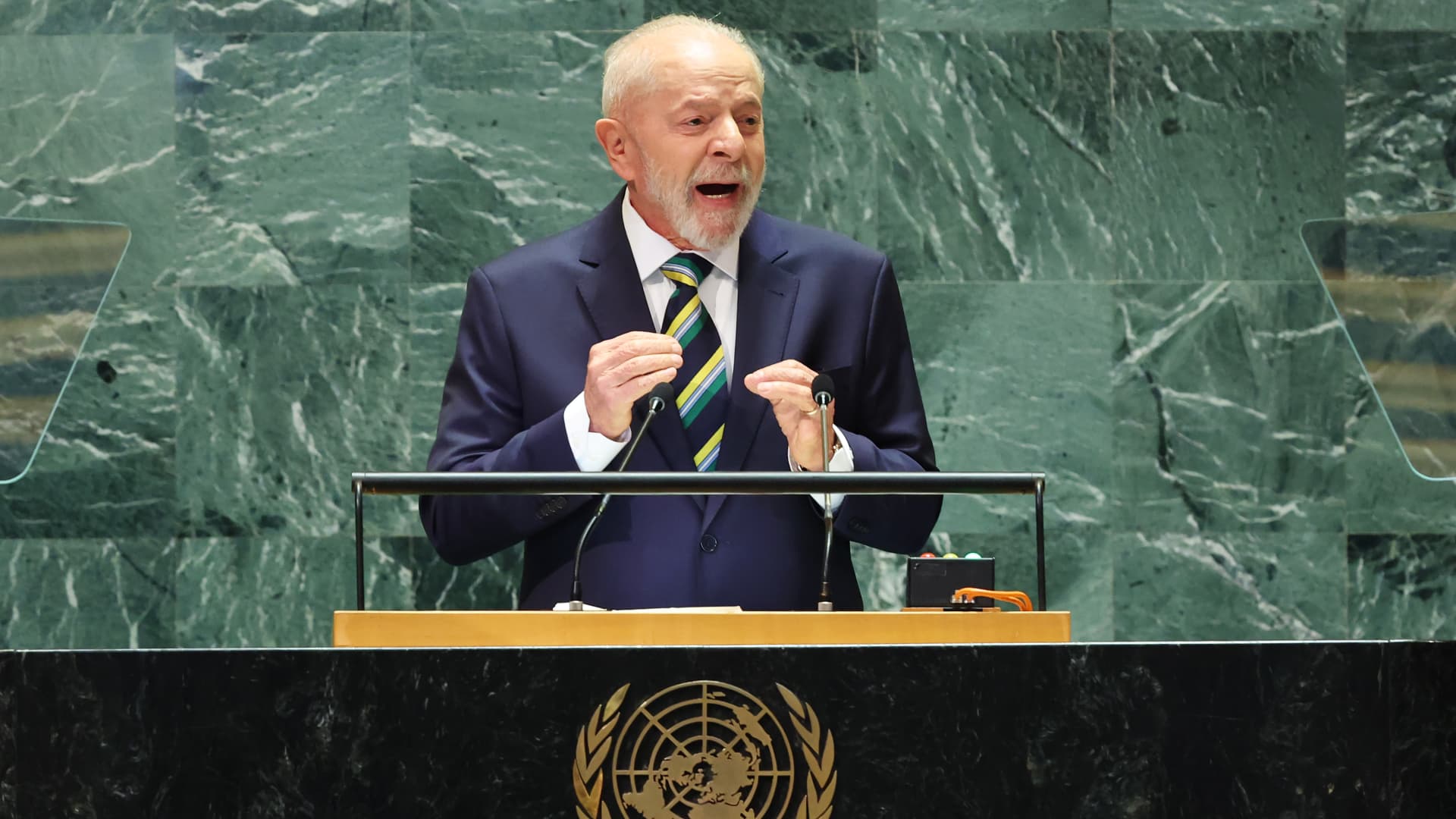Any way you slice it, Latin American stocks have been on fire this year. The iShares Latin America 40 ETF (ILF) has rallied more than 25% in just the first half of 2025, far outpacing the S & P 500’s 5% gain. Many country specific benchmarks and ETFs are doing even better so far this year (gains through June 30 afternoon trading): Brazil: Bovespa up 15%; EWZ ETF up 27% Mexico: S & P/BMV IPC index up 14%; EWW ETF up 29% Chile: S & P/CLX IPSA up 22%; ECH ETF up 25% Peru: S & P/BLV up 12%; EPU ETF up 23% Colombia: MSCI ColCap Index up 20%; COLO ETF up 25% Those gains come even as trade tensions have thrown the global economic outlook into disarray, highlighting Latin America’s seeming resiliency. On top of that, many of these markets are trading at historical discounts and are primed for strong growth in corporate profits. Rising currency reserves “Latin American economies became a little bit more boring in the last 10-15 years,” Mario Mesquita, chief economist at Itau Unibanco, the largest private sector bank in Brazil, told CNBC. “As they acquired [currency and gold] reserves, they adopted floating exchange rates, which act as buffers.” “It used to be the case that when the world economy slowed down, Latin America went into crisis. That’s no longer the case,” Mesquita added. For example, World Bank data shows that Brazil’s total reserves grew by 10% to about $319 billion between 2010 and 2024. Colombia had the biggest expansion in total reserves in that time, surging 119% to nearly $62 billion. Mexico, Chile and Peru saw reserves grow by at least 59%. Those have come in handy as protectionist tariff policies from the U.S. threaten to drive global inflation higher. The U.S. on April 2 unveiled steep levies on imported goods from other countries. This led major trading partners, including China and Canada, to retaliate with duties of their own. President Donald Trump later delayed the implementation of many of the tariffs to allow the U.S. to negotiate with other nations, but several higher levies still remain in place. “That has implications for Latin America, especially for Mexico,” said Mesquita. “South America outside Colombia is much more exposed to China. So, the impact of the trade war in South America is indirect, mostly through its impact on the Chinese economy.” The stock market outlook for the region, however, is also supported by still-cheap valuations and the prospect of sharp earnings growth this year. Brazil’s Bovespa index trades at about 8.4 times forward earnings, well below a historical average of 10.7, Bank of America data shows. Mexico’s S & P/BMV sports a multiple of 13, below its average of 14.2$ foing back to 2010. Chile, Peru, Colombia and Argentina also trade at discounts relative to their historical average. A weaker dollar is also boosting these markets in 2025. The dollar index is down 10.6% year to date, making it cheaper Latin American countries to finance dollar-denominated debt. It also makes it easier for consumers in other countries to buy goods that are sold in dollars. What’s more, stock market returns denominated in local currency are more valuable when translated back into dollars. Should the U.S. currency stay under pressure, Latin American markets are likely to benefit, especially Brazil. “Under the Trump administration’s aggressive trade policies, the dollar is facing renewed pressure as countries increasingly look to de-dollarize,” 22V Research strategist Jordi Visser wrote. “Brazil is at the forefront of this shift. Bilateral trade with China is now settled in [Brazilian real and Chinese renminbi], and the BRICS bloc is building frameworks for local-currency settlements,” he said, referring to the Brazil, Russia, India, China, and South Africa trading bloc. “Brazil stands at the epicenter of a powerful global reordering. While most investors remain preoccupied with tariffs, U.S. recession risk, inflation, and long-duration bond risks, Brazil has quietly become one of the most compelling macro opportunities of 2025,” Visser said in a note last month. How to play it For U.S. investors looking for exposure to these markets, the most straightforward way to play it is through the ETFs mentioned above. Here’s how much each fund charges in fees: EWZ: 0.59% EWW: 0.50% ECH: 0.60% EPU: 0.59% COLO: 0.62% There are several individual stocks investors can buy that trade in the U.S., such as MercadoLibre , which Itau head of equity strategy Daniel Gewehr likes. For those able to purchase domestic stocks, Gewehr highlighted names tied to Brazilian infrastructure, Mexican and Chilean financials, as well as consumer staples in Mexico. Overall, however, he’s broadly bullish on Latin America. There’s a “very good probability in the next 12 months that Chile, Peru, Colombia, Mexico, Brazil have interest rates reduction … That’s good, because that helps foster earnings,” he said at Itau’s conference in New York in May. Corporate profits throughout the region can grow at about 15%, Gewehr said. “It’s a double-digit growth for a single digit valuation” in Brazil, Latin America’s largest economy, and elsewhere in the region, where stocks sell at about 9.5 times future earnings, or almost a 20% discount to the historical average, he added.





